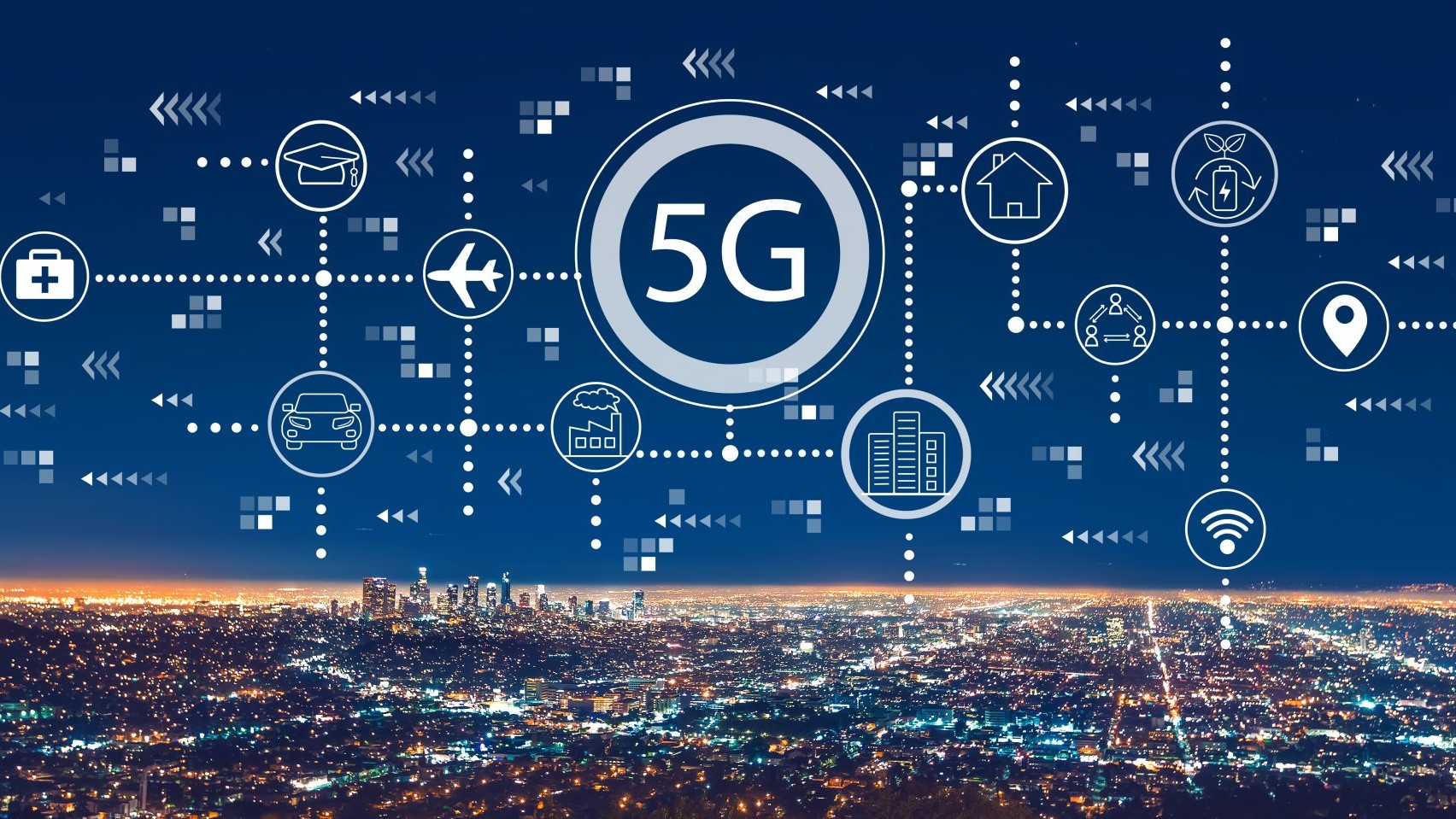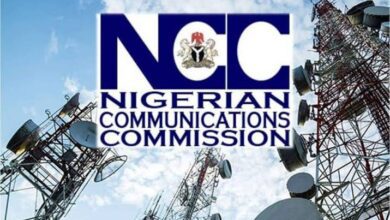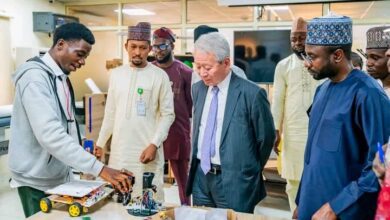OPINION: As We Continue The Wait For 5G Services

By Sonny Aragba-Akpore
Nikolai Gogol’s “The Inspector General “ told a story many years ago that resonates today. Apart from painting a picture of mockery in his satirical rendition, it tells us about the frailty of humanity and its foibles despite the pretences.
Ben Jonson,s “ Volpone” brings the story home and giggles at its consequences as capsulated by the hunchback displaying greed and pretentious lifestyle in society. But more instructive is Gogol,s “The Inspector General “ which depicts deception in its entirety.
In 1978, Nigerian playwright,a very big example of his generation,Femi Osofisan, published “Who is Afraid of Solarin” adapted from Gogol,s “The Inspector General “ and brought the story home painting a lurid picture of the deception that goes on in government.
Osofisan never envisaged our present state of affairs but his picture of the future was clear for all to see as we experience today .
But was he a visionary, who could predict the things to come.Perhaps so.
Solarin as a public complaints commissioner in the old western state was revered by all and his name struck awe in society as he had his eyes on integrity and so like Gogol’s character, Solarin was a change agent. But Ofcourse many people used his name,dropped it in order to create awe on society,hoodwink the people and make them accept “defeat as fate” to quote Osofisan.
What has happened to integrity in public service and how do we situate this in telecommunications services especially with regards to poor quality of service,drop calls and data fleecing yet no one seems to care and questions not being asked and no answers in that regard.
If we have managed to live with the drudgery of poor services,how do we begin the story of fifth generation (5G) telecommunications services which allegedly entered Nigeria nearly three years ago without drawing inference from the pieces of literature highlighted above?
The materials talk about life and everyday living.So are telecommunications services because they are integral parts of everyday living and when government decided to introduce 5G into the country,those familiar with its workings saw it as promises of life abundance.
It’s nearly 30 months since its launch but the noise and euphoria that welcomed it have died down,and the people have little or nothing to show for it except government which was the biggest beneficiary having collected $273.6m each from the three licenced operators and while we await the services ,the government,indeed everyone looks elsewhere for the much hyped 5G to take proper root.
If anything at all,there are pockets of services so far, offered by the three supposed operators for the services: MTN Nigeria, Mafab Communications and Airtel Nigeria but as things stand today, it appears 5G was mere noise and hype as Nigerians await in their various corners for the much talked about 5G services that Karl Toriola,MTN Chief said will be a game changer. Strangely too,no one is asking questions as to the existence or not of the 5G services.
Have subscribers become so complacent that they have accepted defeat as fate in the face of corporate docility? Even the once vibrant pressure groups-Association of Telecommunications Companies of Nigeria (ATCN), Association of Licenced Telecommunications Companies of Nigeria ( ALTON) among others have lost their voices. Are we now confined to accepting anything simply because we are afraid to face the consequences therefrom if we shout?
Everyone yearns for heaven but afraid of dying.But like Osofisan said somewhere,”is this death so horrible that we all must compromise with injustice in order to live?”.
The future is our judge.
While we agree that providing services is purely a business decision but are business people not in business in their own interests and that of society?
And no one is talking about the services yet nobody is worried or are they experiencing subdued worries until the services come or have they completely given up on the expectation of the services?
On June 19, 2023, the last of the three to acquire the 5G licence, Airtel, kicked off its fifth generation network rollout in four locations, Lagos, Ogun, Rivers and Abuja, and the firm, is targeting coverage of the entire country by the end of the current financial year.
Unsuspecting Nigerians who joined in the excitement of the alleged entry of 5G services are now unsure of their expectations.
Licences were awarded on December 21, 2021 to MTN Nigeria and a little known Mafab Communications. They had a roll out timeline of August 2022 but the regulator granted an extension of five months to Mafab Communications to get ready. Thus the regulator changed the rules in between the game thus sending the first signal that all was not well.There have been several red flags.
MTN tried to weather the storm despite the challenges (even when it will not admit it openly) and “launched” a semblance of 5G services in parts of Nigeria. But that is where the excitement stops. Airtel, a late arrival shows some promises as we wait.
And so, the hype built around 5G has left everyone including the operators and regulators speechless as there is very little tangible evidence of availability of services so far. We have now accepted our fate as the wait goes on.
Nigerian Communications Commission (NCC) data show that 5G subscriptions in the country increased to 2.3 million in December 2023.
This, however, represents an insignificant 1.04% of the country’s total active subscriptions for telephone services, which stood at 224.7 million at the end of 2023.
International Telecommunications Union (ITU) Mobile Network Coverage facts and figures 2023 says “Since commercial deployment began in 2019, 5G coverage has increased to reach 40 per cent of the world population in 2023. Distribution, however, remains very uneven.
While 89 per cent of the population in high-income countries is covered by a 5G network, coverage remains limited in low-income countries. Europe boasts the most extensive 5G coverage, with 68 per cent of the population covered, followed by the Americas region (59 per cent) and the Asia-Pacific region (42 per cent).
Coverage reaches 12 per cent of the population in the Arab States region and less than 10 per cent in the CIS region (8 per cent) and Africa region (6 per cent).
Ninety per cent of the world population is covered by 4G, and where 5G is not available, this remains a very good alternative.
However, 55 per cent of people without access to 4G live in low-income countries. Whereas 95 per cent of the population in high-income and middle-income countries is covered by 4G or above, the proportion drops to 39 per cent in low-income countries, where 3G remains the dominant technology, and often the only technology available to connect to the Internet.”
The overall pace of 5G growth in the country remains sluggish, underscoring the complexities associated with transitioning to next-generation networks.
However, the data showed that 2G subscriptions continued to dominate, representing 57.78 per cent of connections in January 2024.
The ITU recently revealed that Africa maintained the lowest 5G coverage rate globally, standing at only 6 per cent as of December 2023. It attributed the low 5G coverage rate on the continent to the ongoing significance of older mobile technologies, particularly 2G and 3G networks.
The ITU report highlighted the persistent reliance on 2G and 3G networks in many African countries, including Nigeria, where those technologies offer a cost-effective means of delivering essential mobile services, especially in regions lacking access to 4G and 5G networks.
In 2022, around one tenth of all connections worldwide used 5G technology, with this share set to surpass one half by the end of the decade. However, regional disparity is expected to persist, with the availability of 5G infrastructure, high costs imposed by network operators, and the availability of 5G handsets continuing to impact consumer uptake.
The North America, Developed Asia Pacific, and Gulf Cooperation Council (GCC) regions are set to have surpassed 90 percent adoption by 2030, while adoption in Sub-Saharan Africa is projected to remain below 20 percent. However, it has been suggested that 5G could play a key role in bridging the digital divide in the form of fixed wireless access (FWA).
5G FWA services use 5G networks to deliver high speed broadband internet in regions without fixed broadband infrastructure. As of 2023, almost a third of service providers in the Middle East and Africa offered a 5G FWA service.
The Global System Mobile Association (GSMA) says by 2025, 5G networks are likely to cover one-third of the world’s population. The impact on the mobile industry and its customers will be profound.
5G is more than a new generation of technologies; it denotes a new era in which connectivity will become increasingly fluid and flexible.
5G Networks will adapt to applications and performance will be tailored precisely to the needs of the user.
Working closely with the mobile operators pioneering 5G, the GSMA is engaging with governments, vertical industries including automotive, financial services, healthcare providers, transport operators, utilities and other industry sectors to develop business cases for 5G.
5G remains an exciting new technology that consumers and service providers are bracing up for.
5G statistics reveal projected volume growth for 5G smartphones as well as for revenue for 5G chipsets. Leading original equipment manufacturers are also beefing up 5G patents in a bid to be first in the 5G wars.
There are currently hundreds of millions of 5G global subscriptions. Subscriptions are forecast to reach three billion by 2025. (5G Americas and Omdia, 2021).
As of April 2021, there were 683 total 5G and Long Term Evolution (LTE) deployments made worldwide. (5G Americas and Omdia, 2021).
There are currently 135 5G networks around the world that comply with 3rd Generation Partnership Project (3GPP) standards. (5G Americas, 2020)
5G smartphone shipments comprised 40% of global volume by 2021. This is expected to grow to 69% in 2025. (IDC, 2021).
In 2021, there were 89.5 million 5G smartphone units shipped to the United States. 5G smartphone shipments will reach 153.3 million units in 2025, at a CAGR of 35.6%.
Consumer electronics and automotive applications are forecast to both have a 21.7% share of the 5G infrastructure by 2025. Meanwhile, industrial apps will have a 20.1% share while energy and utilities will have a 15.7% share. (Statista, 2020).
The 5G chipset market reached $3.55 billion in 2021 and $22.86 billion by 2027, at a CAGR of 41%. (Statista, The Insight Partners). Samsung has a 74% market share of the 5G smartphone market in the US. This is followed by LG at 15% and OnePlus at 11%.
Huawei has a 15.39% share of 5G families with patents. Huawei is followed by Qualcomm (11.24%), ZTE (9.81%), and Samsung (6.7%). Data presented by Bankr indicates that the 5G technology global coverage will grow by 253.84% in the next five years. By 2025, about 53% of the global population at 4.14 billion will have access to the technology.
Few regions are driving 5G technology uptake.
In 2021, the network coverage reached an estimated 1.95 billion people representing about 25% of the global population. In the last two years, the network acces progressed to 32% of the global population at 2.5 billion.
In 2023, 5G network reached about 39% of the global population at 3.05 billion people. By 2024, an estimated 46% of the global population at 3.6 billion will be using the network.
According to the research report: “The over one billion access to 5G coverage in 2020 is a culmination of a joint clear consensus on the 5G network by major players in recent years. The coverage is significant however, it is being driven by a select few regions in Asia, the US, and Europe.
Other regions are still building the infrastructure to accommodate the technology. Notably, Asia is a current leader in 5G after undergoing a rapid migration in mobile broadband networks and smartphones setting the perfect ground for 5G adoption.”





